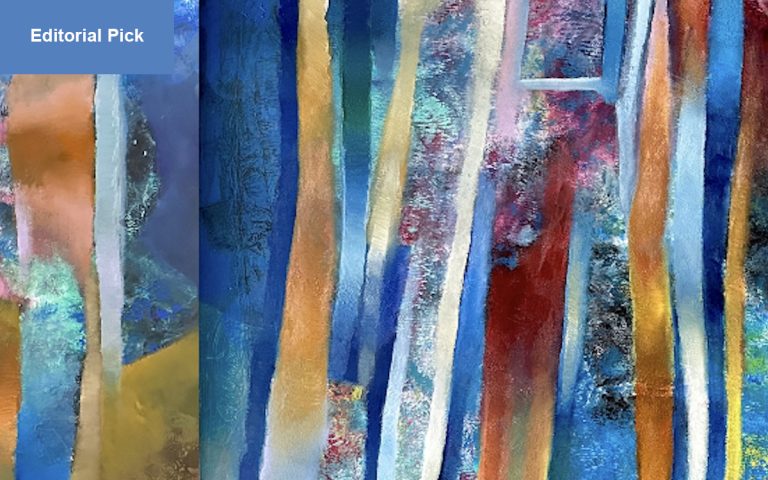Miguel Barros is a Lisbon-born artist whose work invites quiet reflection on the planet, memory, and our fragile place within it. Born in 1962, Barros holds citizenship in Portugal, Canada, and Angola—each country leaving a distinct mark on his life and creative direction. He studied Architecture and Design at IADE in Lisbon, graduating in 1984. That background shaped how he sees space and structure, but it’s through painting that he has found the freedom to explore inner landscapes. In 2014, he moved from Angola to Calgary, Alberta, shifting his base from one kind of horizon to another. The geographical transitions in Barros’s life mirror the thematic shifts in his work—between continents, between built forms and organic decay, and between the imagined and the remembered.

Barros doesn’t paint for decoration. His paintings speak from a deeper place. They suggest that our relationship with the world is out of balance—and that maybe, just maybe, we know it.
Dreaming Blue Atlantis, one of Barros’s large-scale works, is built on recycled PVC panels and layered in oil paint. The surface is 365 cm long and 97 cm tall (around 144” x 39”). Its scale alone gives it presence, but the content is what lingers.
Barros describes the piece as a painted yearning—a longing to find his “lost Atlantis.” Not a real place, but a dream-space. The idea of Atlantis has always carried mythic weight. Plato’s version was an ideal society that collapsed under its own hubris. In Barros’s hands, it becomes something more personal and abstract: a vanished harmony, a refuge where the world made sense.
The material—recycled PVC—matters. It’s an intentional choice. Using discarded industrial plastic as a base is a way of folding environmental concern into the very structure of the work. It adds a quiet irony to the painting’s dreamlike tone: beauty born on trash. This duality runs through the whole piece.
Oil paint softens the edges of the hard plastic, building layers of light and shadow, movement and stillness. There’s water imagery, though not directly illustrative. What he’s painting isn’t the ocean, but the feeling of being underwater. The dream of Atlantis is submerged in these layers, elusive but insistent.
Barros writes that Atlantis, in the human imagination, is where “all things find balance: the beautiful, the just, the stable, the eternal.” And yet, he says, nature—with its “fierce wisdom”—reminds us that everything is temporary. What feels eternal collapses without warning. The sea doesn’t shout it; it whispers. And its message is blunt: we’re not the center of anything.
That line—Humanity is not the center of all things, but merely a part of the whole—is a quiet thesis for Barros’s work as a whole. It’s not scolding or accusatory. It’s an invitation to humility.
The painting doesn’t offer a solution. There’s no utopian architecture in sight, no blueprint for how to fix what’s broken. What we see instead is the tension between longing and acceptance. The longing for balance, for stillness, for a place like Atlantis—and the recognition that nothing stays. Atlantis is a dream. The PVC is real. The oil paint hovers between them.
In person, Dreaming Blue Atlantis likely reads as both tranquil and uneasy. The colors might lull the viewer, but the message—spoken in silence—is less comforting. This is not a return to paradise. It’s a meditation on the limits of human control, on the cost of forgetting that we are part of a system, not above it.
Miguel Barros uses his background in design to structure space within his paintings, but what fills those spaces is feeling. His art is layered in material, in concept, and in memory. It’s not didactic. He’s not pointing fingers. Instead, he’s opening a door to a kind of contemplative stillness. To imagine a world in balance, and then to mourn its disappearance.
In an age obsessed with urgency and progress, Barros’s work asks us to pause. To listen. To dream, perhaps, of Atlantis—but not as a place to conquer. As a reminder. A myth, submerged. A whisper that stays with you.

